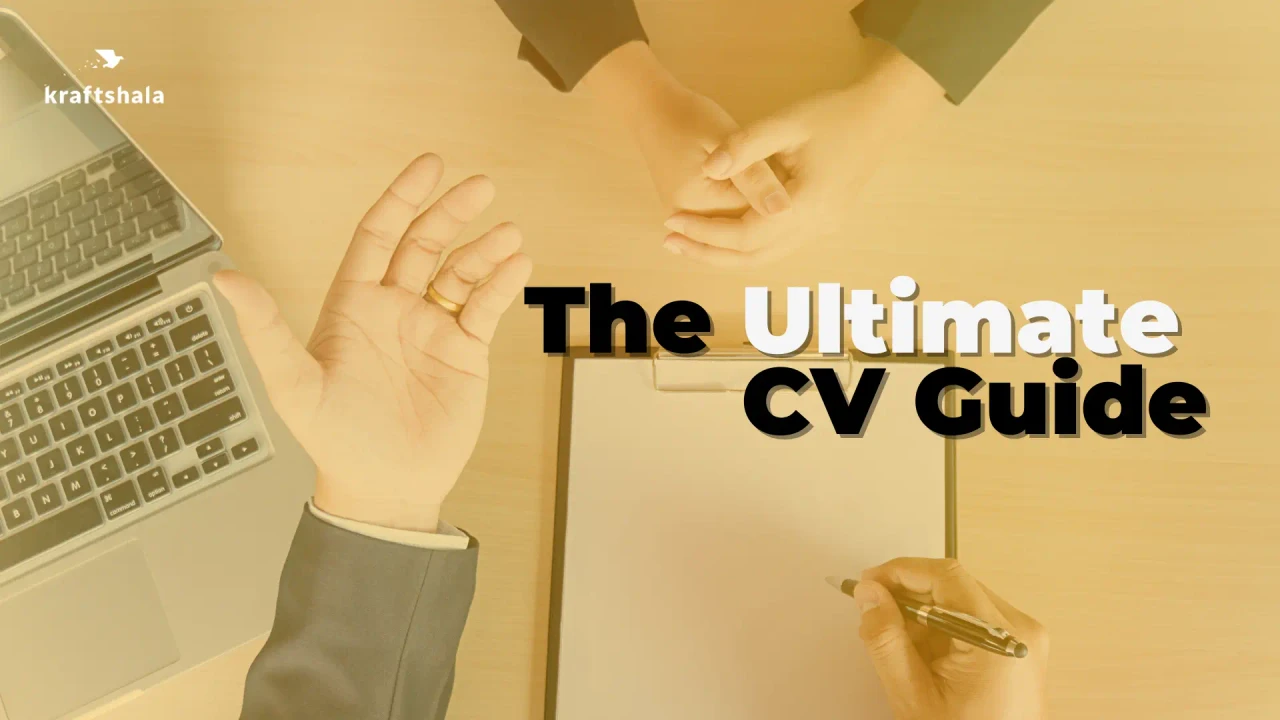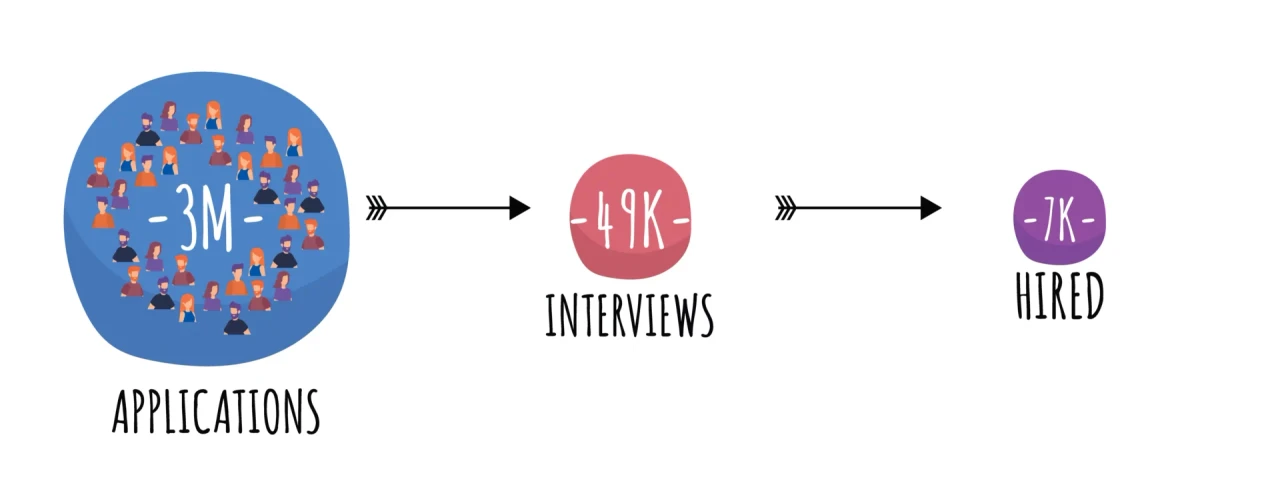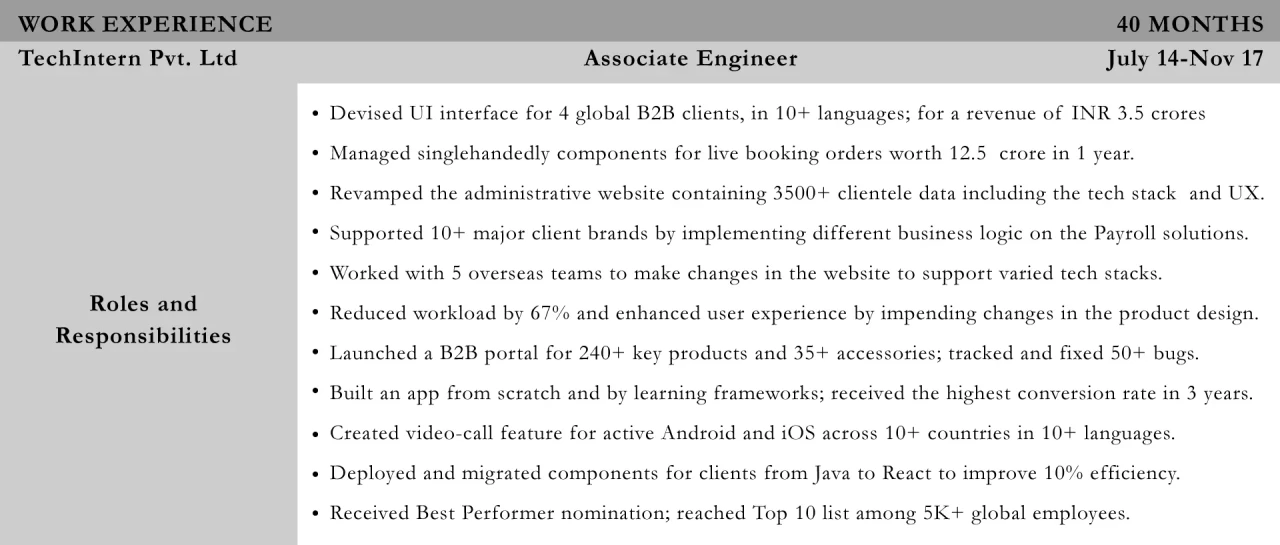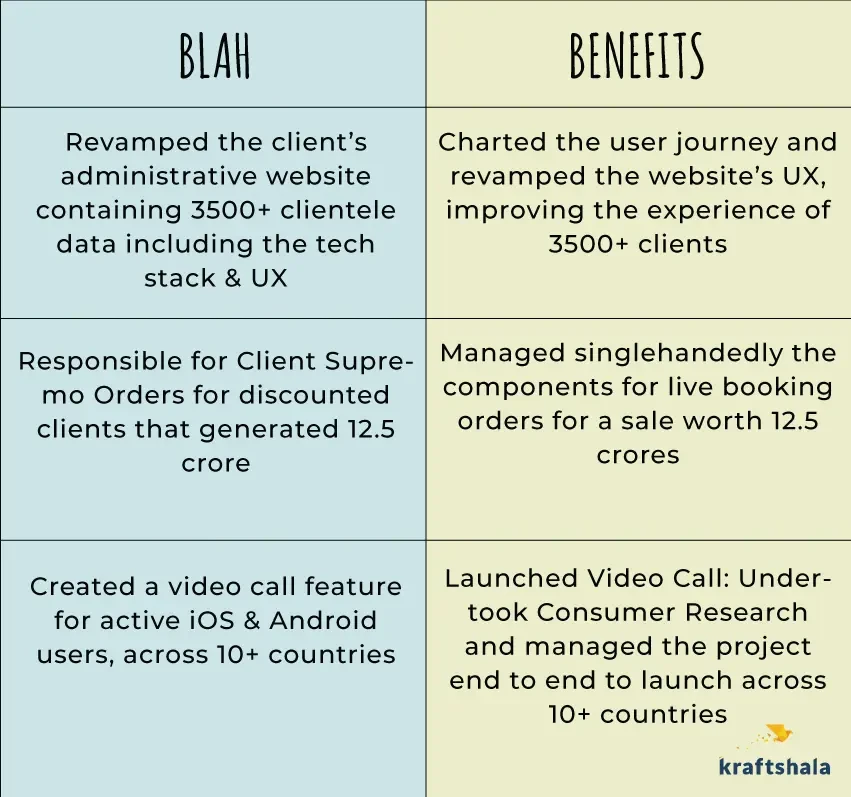How to Make a CV – Ultimate CV Guide for Experienced Folks
Since you have reached this page, I know that you are right now looking for an ultimate guide on how to make a CV that simply stands out.
We all dream of a resume that is like a conversion machine. A resume that makes recruiters want to interview us after a simple glance at it.
The bad news I have for you is that probabilistically, you will fail at this pursuit.
The good news I have for you is that it is indeed possible to make a CV that is a conversion machine.
Let us discuss the bad news first.
Why do most CVs fail?
You are very likely to fail because the majority of resumes actually fail at this pursuit. While most people envision to serve the recruiter a spicy and delicious bowl of paani puri, a vast majority* of the resumes end up being like lukewarm water and fail on their objective.
The Asterisk: How likely is it that your CV fails to get you an interview? Think about it. How many people do you think apply to dream recruiters like Google, Amazon, HUL etc? According to QZ.com, this number is 3 million for Google.
Now how many of these resume applications do you think convert into an interview?
Let us do a back of the newspaper calculation.
We know that the number of hires google makes each year is around 7,000.
The rate of converting the interview process is expected to be somewhere between a very healthy 1 in 5, to something that will give the HR some sweat: 1 in 10. Let us take a middle lane 1 in 7 for our guesstimate.
This means that for 3 million applicants, only 49,000 resumes actually get an interview.
This means that for a dream recruiter like Google, probabilistically 98.3% of the resumes fail to get even a step into the interview room.
The first major reason for this is that most people spend too little time in creating their resume. Maybe a few hours before they have to submit.
If you compare it to the amount of time successful MIT applicants spend on their resume, which is on the lines of a week to ten days, you can see why most people end up making a mediocre resume.
The second reason why you are most likely to not create an exceptional resume is that most of us start out on the wrong limb. Most people start out by searching for resume formats and ready-made CV builders that you can quickly fill up.

This is similar to trying to build up the 7th floor of your house without having the first 6 floors or the foundational basement.
Great resume formats are just the makeup that make your CV shine and glitter. It is certainly not something that will get the recruiter to put you through to the interview round.
We have created this Ultimate CV Guide
We know your time is important, but remember that making your resume is also a very crucial objective that you have set out for. Devoting time & energy to creating a resume is an investment that keeps yielding rewards for about a decade of your career. Hence we have created this DO-IT-YOURSELF guide that will help you create a stellar resume with a time investment of 10 hours. We would suggest that you spread these out across 3-4 days.
Oh, and don’t worry, we will cover resume formats and the other makeup bit as well, but it is the last step of this guide, as it should be!
Now, to make this guide, we have spoken to one of the most sought after recruiters in the country, the makers of Maggi, Nescafe and Kit Kat- Nestle India, and collated their insights.
This guide will provide you answers to questions such as:
- What to put in your CV?
- How to make a CV for working professionals?
- How to highlight my work experience in a CV?
- How to write the points in your CV?
- Which resume formats (one page, two page) should you choose for your CV?
- How to make a resume summary?
- Should I be putting my hobbies in a professional CV?
- How to use the CV to drive the conversation in your interview?
This guide has been created into 5 chapters, of which currently you are reading the first chapter. This guide has free downloadable worksheets that can help you to frame your CV points, choose between them, so on and so forth. We would suggest that you follow the order that has been laid out below, because each chapter has a crucial part to play.
Scroll below to start reading or if you prefer watching videos, you can access the Ultimate CV Program on the Kraftshala App below. It’s free for you, no catch 🙂
So let us start by understanding what a CV is. Without being on the same page of what we are trying to make hear, we will not be able to help you out in creating a stellar CV.
Let us hear from Aastha Bindlish, the Talent Acquisition Lead from Nestlé, here in this interview.
“See, a resume is actually a snapshot of an individual’s brand. You have to make it exciting enough to the recruiter to feel the need to meet you. That’s what the resume does. It acts as the first point of interaction with the hiring manager or with the recruiter, and, if that does not go well, it takes a lot of effort from the individual’s end to kind of convince the organisation that they’re fit for the role. So, it’s the first impression that matters. In most situations, this is what helps you make the first impression right.”
You see how she equated the resume to a snapshot of a brand? What do you think it makes you?
Yes, YOU are the brand.
And who is the recruiter? The recruiter is the consumer who is considering buying the brand.
So, CV is an ad targeted to the recruiter. It’s not a summary of the person you are. Or, to rephrase, it’s not the summation of the person you think you are. The CV is not about you, it is about the recruiter – your potential boss, who is looking for a certain set of things.
This means that the goal of the CV is not to present your entire profile, but to present those parts of you which are actually relevant to the job at hand. And not presented in a blank fashion, but in an impactful, specific number driven way that recruiters really love.
For example, let us look at Aastha’s response to this CV point here in this video.
For one, evaluators from Reckitt have access to this training material, but even more importantly, we have come up with these ideas in one sitting without any consumer work, expert speak, trend research etc. Some of these exist already, others should never exist in the first place. You are not likely to win this Challenge with these ideas. Don’t believe us? Read on to find out exactly what it takes to come up with winning innovation ideas.
“Okay so I have this CV in front of me. So, couple of things are clear irrelevant matter that I see on my screen right now, which is making the CV look very very cluttered right now. Moving on to a lot of projects that are mentioned here, which are all related to, I am given to understand, they’re all tech related projects that I can see. While you should necessarily mention a lot of good projects, which had high impact, high reach, a lot of value to the organisation you’ve been associated with earlier, you should mandatorily and necessarily highlight those achievements and accolades. But a lot of this information because the kind of profile you’re applying for is very very different than what you have done earlier. It’s not adding a lot to your professional calibre. Because, I am not really too concerned with how good an engineer you were before you decided to enrol yourself to an MBA course. For some organisations, that’ll be an added plus. For tech organisations, if you’ve got a tech background, prior to an MBA, obviously it’s an added plus. But for an organisation like mine, for example, I operate an FMCG domain. I don’t think much of these software achievements or awareness on a lot of these softwares will do much.”
You see how she found a lot of information in this CV unrelated to the job. The applicant wasn’t focused on highlighting the benefits of these CV points to the recruiter, rather the applicant was just writing a summary of what they did. And that’s a huge problem.
So what did we learn from this?
That you must always write the points such that they are presented as benefits to the recruiter. And not a summary of who you are of what you did!
What makes this point really interesting is that this is a mistake marketers often make too. So many times you would see advertisements harping on about product attributes, when they should really be focusing on the benefits that the user would get.
Snapdragon Processor is not a benefit. It is just a product attribute.
The benefit a user gets is speed & multitasking.
OnePlus 6 in its 2018 launch did not talk about the product attributes. They did benefit-based marketing with the slogan ‘The Speed You Need’.
So should you!
Now to really drive this point home, let us look at these CV points that have been written as a summary of things that the candidate did.
While they may be relevant for a Tech role, however are they really relevant when the candidate sends the same CV to apply to all other roles: sales, marketing, product, consulting, finance? Nope, they are just ‘Blah’ when seen from the perspective of a lot of other roles. So on the right side we have reframed them in a way that makes so much more sense for a Sales & Marketing recruiter.
How do we frame the right column and why is it substantially better than Blah? Well that is what we cover in the rest of the program.
CV is not a personal diary, it is an Ad.
Feel free to put your CV points that you fear have been framed as a summary. Tell us which recruiter have you framed them for and we’ll help you make them like a pointed ad.
With this we have reached the end of this chapter. In the next chapter we’ll find out what do different recruiters look for. We’ll be publishing the subsequent chapters of this guide very soon.
Here is the entire list of chapters that would be coming out as a part of this guide.
Chapter 1. What are recruiters looking for?
Every company is different. Learn how different recruiters look for different things in candidates and how to figure out what the company you are applying to values.
Chapter 2. Choosing what to put in your CV
Choosing between different points can be an issue at times. Use the RUB framework (Relevance, Uniqueness & Believability) to figure the pointers that would be most impactful. Let us also talk to the people who know you well, to really understand the strengths that you are naturally made up of.
Chapter 3. Writing Cheat Codes
How should you actually write the CV points? Getting to the part that is most underestimated, the writing itself! Learn the basic fundamentals that ensure that you don’t mess up after putting in all the hard work: Impact Verbs, Past tense or Present Tense, Active or Passive Voice, First Person and Second Person framing.
Chapter 4. The Final Make-Up (How can you make the CV more attractive?)
Finally comes the only part that students usually worry about. What are the formats we should use, what to put in bold, how to create the tables, etc.
This article is written by Eshu Sharma , Co-founder and head of Student Experience at Kraftshala





















